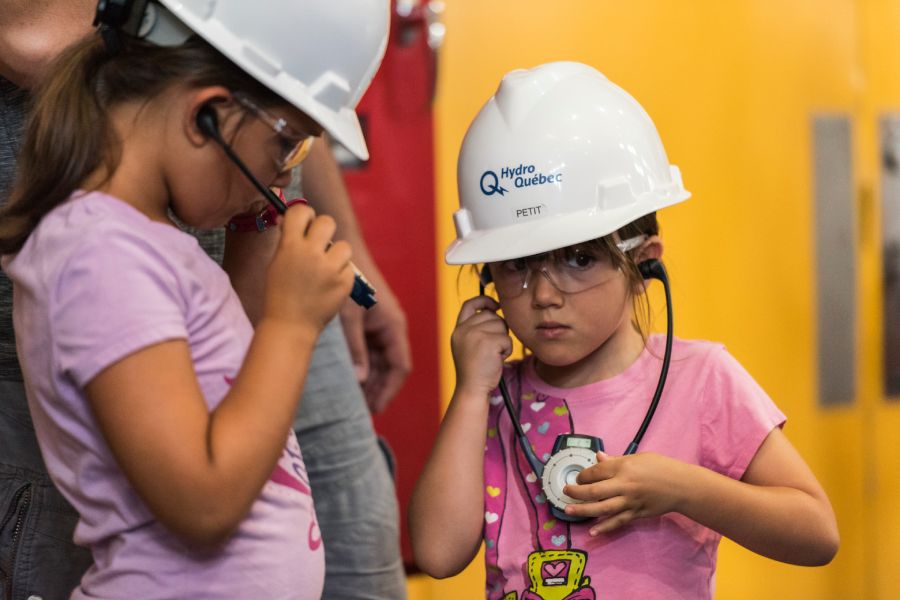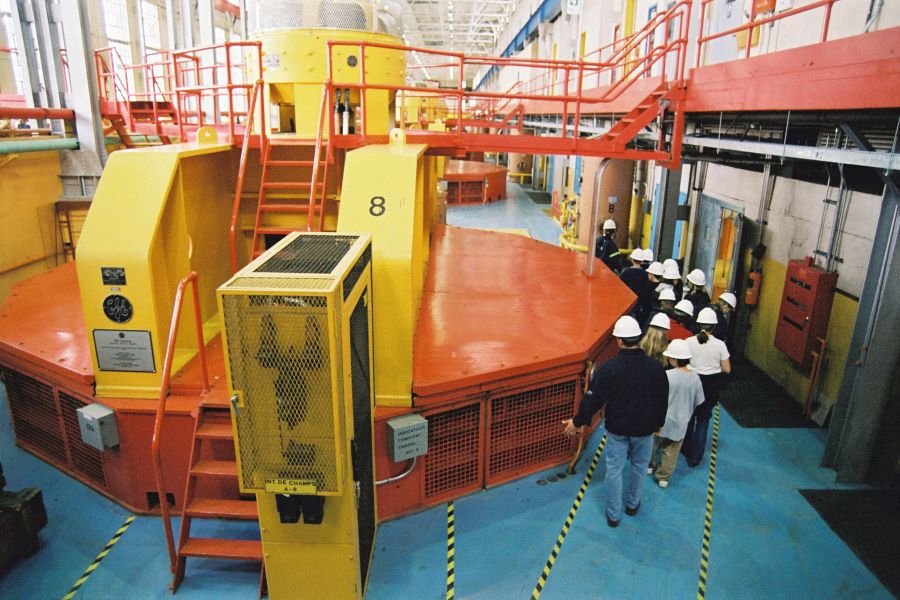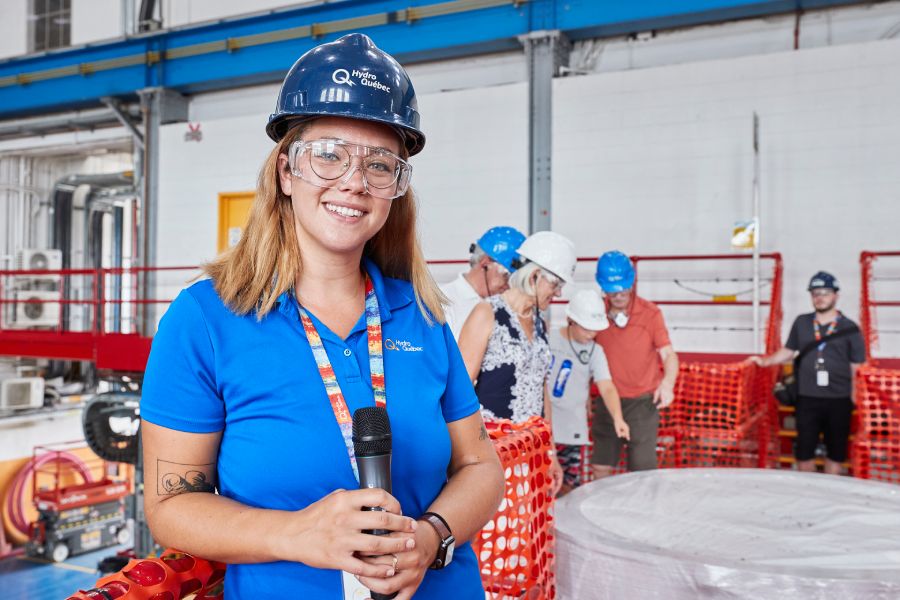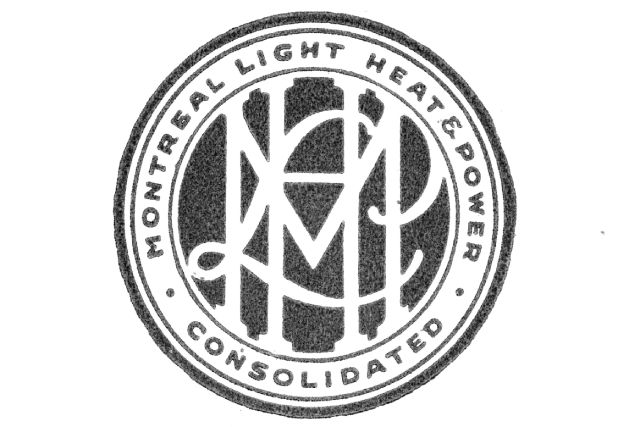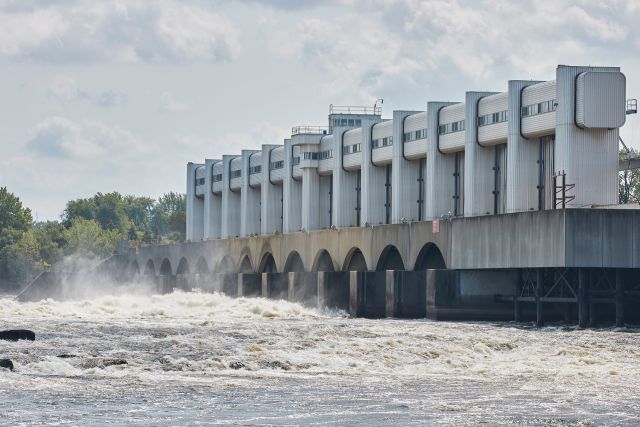The guided tour lasts 90 minutes: 45 minutes in the interpretation center and 45 minutes in the generating station.
During the summer, there are four tours daily, at 9:30 a.m., 11:15 a.m., 1 p.m., and 2:45 p.m.
The tours are generally given in French, for an English tour please call us in advance.
Spaces are limited, so we strongly recommend booking at least 24 hours in advance.
Most of the tour is indoors, with a portion outside.
In case of rain, make sure to dress appropriately and bring an umbrella.
Please note: The temperature inside the generating station may vary significantly from the outdoor temperature. In summer, if it is 25°C outside, it can reach about 35°C in the generating station.
Because spaces are limited, reservations are mandatory, regardless of the number of people, and must be made at least 24 hours in advance.
Please note: It is best to confirm your reservation by phone. The guides will then give you all the necessary instructions before your visit.
The tour is partially accessible to people with reduced mobility.
Two wheelchairs are available.
Please note: Half of the tour is on foot, and there are a number of steps to climb up and down.
No. Vehicles must be parked on Rue du Barrage, along the water.
No. The tour is suitable for school-age children. For safety reasons, children under 2 are advised not to participate in the tour. (See next question.)
The tour is not recommended for the following reasons:
- Visitors must wear personal protective equipment. However, the size of this equipment is not suitable for children under 2.
- The generating station is an industrial property with high heat, noise and dust levels.
Yes. Half of the tour is on foot, including up and down two flights of stairs.
Flat, closed-toe shoes are required.
In case of rain, make sure to dress appropriately and bring an umbrella.
Please note: The temperature inside the generating station is significantly warmer than outside. In summer, if it is 25°C outside, it can reach about 35°C in the generating station.
This is a requirement of Hydro‑Québec’s corporate security management team to protect personnel, visitors and equipment.
Visitors aged 18 and over must present identification (driver’s licence, health insurance card or passport) before they can tour the facility.
No. For safety reasons, it is prohibited to bring a camera or any other electronic device (cell phone, tablet, MP3 player, portable music player or computer) into the generating station.
No. Visitors must leave their personal belongings (purse, backpack, cell phone, bags, etc.) in a locked locker provided free of charge.
Yes, but visitors must carry them at all times.
We recommend staying well hydrated, especially in the summer, as it can be hot in the power plant.
No. The electromagnetic fields in power plants may disrupt pacemaker operation. As a precaution, persons with pacemakers may not participate in this part of the visit.
No. There is no restaurant, cafeteria, vending machine, or dining area inside.
The starting point of the tour is the generating station’s interpretation center. Getting there:
- From Boulevard Lévesque Est, in Laval, turn onto Rue du Barrage. Park on the street.
- Walk down the hill that takes you to the walkway to the generating station.
- Follow the signs for “Guided Tours” to the interpretation center.




